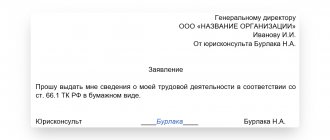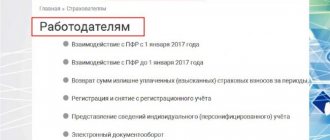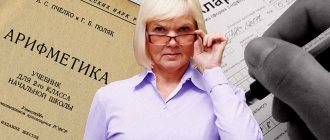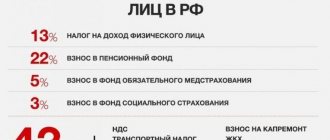The government introduced a bill to the State Duma “in order to protect the national interests of the Russian Federation in connection with the unfriendly actions of foreign states and international organizations.” Several articles in the document are devoted to changes in Russian pension legislation. Which pensioners will they affect?
Indexation of pensions in 2022: what the new law is about
Firstly, the bill states that the government of the Russian Federation has the right to make decisions on establishing the amount of social supplement to pensions that exceeds that established by the current federal law. We are also talking about a possible revision of the calculation and establishment of the cost of living (including for determining the size of the federal social supplement to pensions) and the minimum wage.
As soon as the government raises the cost of living of a pensioner, this will automatically lead to an increase in the amount of additional payment to pensions to its level. According to current legislation, pensions in Russia cannot be below the subsistence level.
What types of pensions are not indexed?
The new rules do not affect all types of pensions. The restriction applies only to insurance and fixed payments to it. And besides, only for the category of workers, i.e. There will be no indexation for those who continue to work after retiring. Therefore, all working pensioners today cannot qualify for an annual increase in payments.
Since 2015, the Decree of the Government of the Russian Federation has annually approved the coefficient for increasing the size of the fixed payment.
For an insurance pension, which, as we now know, is taken into account in pension points, the concept of the cost of one pension coefficient is used. It is also approved annually by the Government of the Russian Federation. You should know that the fixed payment is indexed , and the insurance pension is adjusted by increasing the cost of one pension coefficient (point).
But this does not mean that the pensioner will now not be able to receive the due amounts and will lose the past indexation forever. After leaving his job, he is entitled to payments taking into account all missed annual payment increase factors.
Another thing is that such a restoration will not happen immediately , and not even from the next month after dismissal. Payments after dismissal, taking into account the new indexed amounts, are provided for by the Law only three months after dismissal from work .
Next, we’ll look at why recalculation takes so long after work stops. But first you need to know who is considered a working pensioner and how much pensions are indexed in 2020.
Who will have their pensions indexed due to sanctions?
“This government bill covers all types of pensions, except military ones. That is, all recipients of insurance pensions, state and social - those paid by the Pension Fund of Russia, - comments the associate professor of the basic department “Human Capital Development” of the Russian Economic University. G. V. Plekhanova, Candidate of Economic Sciences Lyudmila Ivanova-Shvets. — It is clear that the document does not yet contain exact figures by how much and when pensions will increase. But the very message, the very decision to additionally index all types of civil pensions evokes a positive response.
In the current situation, it is necessary to help not only banks and businesses, which have certainly suffered. First of all, it is necessary to support the most socially vulnerable - pensioners who do not work. What is a 10-15 thousand ruble pension? With today's price hikes, especially for food and medicine, this money is simply not enough to live on. And we also need to pay for housing, telephone, travel... I hope the decision on additional indexation will be made as quickly as possible, and not postponed until the fall.”
As you know, insurance pensions for non-working pensioners were indexed by 8.6% from January 1. And state pensions, including social ones, are planned to increase by 7.7% from April 1.
Indexation coefficients
| date | Indexation coefficient | Point cost (in rubles) | Fixed payment amount | Base |
| from 01/01/2024. | 1,055 | RUB 116.63 | RUB 7,131.34 | Federal Law of October 3, 2018 No. 350-FZ |
| from 01/01/2023. | 1,056 | 110.55 rub. | RUB 6,759.56 | Federal Law of October 3, 2018 No. 350-FZ |
| from 01/01/2022. | 1,059 | 104.69 rub. | RUB 6,401.10 | Federal Law of October 3, 2018 No. 350-FZ |
| from 01/01/2021. | 1,063 | 98.86 rub. | RUB 6,044.48 | Federal Law of October 3, 2018 No. 350-FZ |
| from 01/01/2020. | 1,066 | 93.00 rub. | RUB 5,686.25 | Federal Law of October 3, 2018 No. 350-FZ |
| from 01/01/2019. | 1,066 | 87.24 rub. | RUB 5,334.19 | Federal Law of October 3, 2018 No. 350-FZ |
| from 01/01/2018. | 1,037 | RUB 81.49 | RUB 4,982.9 | Federal Law of December 28, 2017 No. 420-FZ |
| from 04/01/2017. | — | RUB 78.58 | — | Federal Law of December 19, 2016 No. 416-FZ |
| from 02/01/2017. | 1,054 | 78.28 rub. | RUB 4,805.11 | Decree of the Government of the Russian Federation of January 19, 2017 N 35 |
| from 02/01/2016. | 1,04 | RUB 74.27 | RUB 4,558.93 | Federal Law of December 29, 2015 N 385-FZ |
| from 04/01/2015. | 1,103 | — | — | Decree of the Government of the Russian Federation of March 18, 2015 No. 247 |
| from 02/01/2015. | 1,114 | RUB 71.41 | RUB 4,383.59 | Decree of the Government of the Russian Federation of January 23, 2015 N 39 |
| from 01/01/2015. | — | 64.10 rub. | RUB 3,935 | Part 1 of Article 15 of the Federal Law of December 28, 2013 N 400-FZ was established |
From 2016, the insurance pension and the fixed payment to it for working pensioners will not be indexed.
DATA REQUIRED TO CALCULATE PENSIONS
(Federal Law of December 28, 2013 N 400-FZ) From January 1, 2015,
the labor pension is transformed into two types of pensions (insurance and funded) and a new procedure for the formation of pension rights of citizens, as well as the calculation of pensions in the compulsory pension insurance system, is in force - the so-called. n. "new pension formula". According to the new pension formula, the size of the insurance pension is calculated based on individual pension coefficients, which reflect the pension rights of the insured person in relative units. In turn, individual pension coefficients (points) are calculated taking into account the amount of insurance premiums paid, the length of the insurance period and the retirement age. The size of the old-age insurance pension is determined as the product of the individual pension coefficient and its value as of the day from which the old-age insurance pension is assigned. Since 2015, indexation of insurance pensions has been carried out through indexation of the value of the pension point and a fixed payment to the insurance pension (analogous to the former fixed base amount of the insurance part of the old-age labor pension). In accordance with Article 16 of the Federal Law of December 28, 2013 N 400-FZ “On Insurance Pensions” (hereinafter referred to as the Law), the amount of the fixed payment to the insurance pension is subject to annual indexation from February 1 to the consumer price growth index for the past year. Every year, from April 1, the Government of the Russian Federation has the right to decide on an additional increase in the size of the fixed payment to the insurance pension, taking into account the growth in income of the Pension Fund of the Russian Federation. The indexation coefficient (additional increase) of the fixed payment amount to the insurance pension is determined by the Government of the Russian Federation. Thus, the amount of the insurance pension is adjusted annually in the following order:
1) from February 1 in connection with the establishment of the value of the pension coefficient for the specified date based on the increase in consumer prices over the past year; 2) from April 1 in connection with the establishment of the value of the pension coefficient for the specified date.
In accordance with Part 6 of Article 35 of the Federal Law of December 28, 2013 N 400-FZ, in 2015 the cost of one pension coefficient:
1) from February 1, it increases by the consumer price growth index for 2014, the amount of which is established by the Government of the Russian Federation; 2) from April 1, it is established by the federal law on the budget of the Pension Fund of the Russian Federation for the next year and planning period based on the difference between the annual growth index of average monthly wages in the Russian Federation and the coefficient of the adjustment made to the consumer price growth index. In this case, the specified coefficient cannot exceed the growth index of budget revenues of the Pension Fund of the Russian Federation per pensioner, allocated for the payment of insurance pensions.
Structure of old-age labor pension
(from 01/01/2015)
Since 2016, a moratorium on the formation of funded pensions has been introduced, which has been extended until the end of 2023.
New - 2015
From January 1, 2015, Russia plans to introduce a new procedure for the formation of pension rights of citizens and the appointment of an old-age labor pension.
According to representatives of the pension fund, today the size of the old-age labor pension depends primarily on the volume of insurance contributions that employers pay for an employee to the compulsory pension insurance system during their working life. At the same time, the length of insurance (work) experience has virtually no effect on the size of the pension.
The equalizing principle of calculating pensions leads to the fact that pension payments to citizens with little insurance (work) experience are made in approximately the same amount as to citizens with a long work experience.
Therefore, representatives of the Pension Fund propose for the economically active population, that is, for those who plan to lead a long and active working life, to increase the role of length of service in the formation of pension rights and calculation of the pension amount.
What will change from January 1, 2015
1. For the first time, the concept of “annual pension coefficient” is introduced, which will evaluate each year of a citizen’s work activity. The annual pension coefficient is equal to the ratio of a person’s official salary, from which insurance contributions to the compulsory pension insurance system were paid this year, and the maximum salary from which employers legally pay insurance contributions to the compulsory pension insurance system. That is, the higher the salary, the higher the annual pension coefficient.
If a citizen’s total insurance experience (periods for which insurance contributions to the pension system were paid) by the date of assignment of a labor pension is more than 35 years, then, according to the new rules, the labor pension will be assigned in an increased amount.
For each year of work experience from 30 to 40 years for women and from 35 to 45 years for men, one additional pension coefficient is accrued. For 35 years of service for women and 40 years for men, an additional 5 pension coefficients are accrued.
2. The new rules for calculating labor pensions will include such significant periods of a person’s life as military service and maternity leave for up to three years. For these so-called “non-insurance periods” special coefficients are assigned.
3. By 2025, the minimum total length of service to receive an old-age pension will reach 15 years. It will increase annually for 10 years, starting in 2015. Women whose pension experience is less than 15 years will be able to apply to the Pension Fund for a social pension upon reaching 60 years of age, men - 65 years of age. In addition, a social supplement to the pension will be made up to the subsistence level of the pensioner in the region of his residence.
4. According to the new rules, it will be beneficial to retire later. Every year the insurance pension will increase by the corresponding premium coefficients. For example, if a citizen works for three years after reaching retirement age without applying for a labor pension, then the fixed payment will be increased by 19%, and the insurance pension by 24%. And if the length of service beyond retirement age without applying for a pension is 8 years, then the fixed payment will be increased by 73%, and the insurance part by 90%.
The right to an insurance pension depends on the year the insurance pension was assigned | ||||
| Year | Minimum insurance period | Minimum amount of individual pension coefficients | Maximum value of the annual individual pension coefficient | |
| in case of refusal to form a funded pension | when forming a funded pension | |||
| 2025 and later | 15 | 30 | 10 | 6,25 |
| 2024 | 15 | 28,2 | 10 | 6,25 |
| 2023 | 14 | 25,8 | 10 | 6,25 |
| 2022 | 13 | 23,4 | 10 | 6,25 |
| 2021 | 12 | 21 | 10 | 6,25 |
| 2020 | 11 | 18,6 | 9,57 | 9,57* |
| 2019 | 10 | 16,2 | 9,13 | 9,13* |
| 2018 | 9 | 13,8 | 8,70 | 8,70* |
| 2017 | 8 | 11,4 | 8,26 | 8,26* |
| 2016 | 7 | 09 | 7,83 | 7,83* |
| 2015 | 6 | 6,6 | 7,39 | 7,39* |
| 2014 | 5 | |||
| * From 2015 to 2022 Regardless of the choice of pension provision option in the compulsory pension insurance system, all citizens have pension rights only to an insurance pension based on the entire amount of accrued insurance contributions. In this regard, the maximum value of the annual individual pension coefficient is the same for any pension formation option. * Moratorium for the formation of a funded pension has been extended | ||||
The minimum level of pension provision, taking into account the provided social support measures and the establishment of a social supplement to pensions for non-working pensioners, will be maintained at the level of the subsistence level of a pensioner in a constituent entity of the Russian Federation. Pension of a pensioner with Moscow registration ( with additional payment from the Moscow budget
):
- Pension in 2022 – 19,500 rubles.
- Pension in 2022 – 17,500 rubles.
- Pension in 2022 – 14,500 rubles.
- …
- Pension in 2010 – 10,275 rubles.
- Pension in 2011 – 11,000 rubles.
- Pension in 2012 – 12,000 rubles.
Anyone who has “Soviet” experience should know that the amount as of January 1, 2002, located on the insurance part will be indexed by 10% for the first year of experience. For each year worked until 1991, 1% will be added. Thus, it turns out that if, say, you worked for 10 years before the specified year, then the increase in your pension will be 20%.
Additional payment to a pensioner for the past time after leaving work
Indexation of pensions for working pensioners in 2022 will still not be carried out. But recently amendments for workers came into force. Article 26.1 of Federal Law No. 400-FZ was supplemented with new provisions for those who quit. You can find out the details in this article.
In accordance with Law No. 134-FZ, upon termination of work, the pensioner will receive a full payment, taking into account the indexation of the fixed payment and adjustment of the insurance pension, as well as the difference between the previous and new amounts for the period from the first day of the next month after termination of work.
The time frame for restoring a new size remains the same, 3 months after dismissal. But already taking into account the surcharge. Thus, they will also pay additional payment from the date of dismissal for these 3 months. Let us remind you that previously such an increase was not paid for the past time. We recommend that you familiarize yourself with these rules in more detail using the examples in the video.
Rules and terms for indexing insurance pensions after dismissal
After dismissal from work, the Pension Fund will recalculate payments taking into account the missing indices during his work. The restoration of the payment of the full (indexed) pension, taking into account the missed indexations, will not occur immediately, but only three months after the dismissal of the pensioner.
Legislators have set aside a fairly long period of time for confirming and processing data on the fact of work using simplified SZV-M forms from policyholders, with the subsequent issuance of appropriate decisions on payment by the Pension Fund. And here we cannot do without an example.
Let's consider the dismissal and indexation of a working pensioner on April 3, 2022: 1. The policyholder submits information monthly using the SZV-M form (Resolution of the Pension Fund of the Russian Federation Board dated 01.02.2016 No. 83p). No later than the 15th day of the month following the reporting period - month, submits information about each insured person working for him, with whom contracts (labor, civil law, copyright, etc.) were concluded during the reporting period, continue to be valid or terminated.
In our situation, a pensioner is considered working in April, despite the fact that he was fired at the beginning of the month. And for him, the employer is still required to provide information about the work until May 15. And he will be considered non-working from May .
2. According to Part 6 of Article 26.1 of Law No. 400-FZ, the decision on the payment of indexed amounts is made in the month following the month in which the Pension Fund of Russia received data on work.
In the month of July (following June, in which information about the fact of work for May is received), the Pension Fund is obliged to calculate and make a decision on the payment of amounts, taking into account the due increase.
3. The calculated amounts of the insurance pension will be paid from the month following the month in which the decision was made (Part 7 of Article 26.1 of Law No. 400-FZ).
Thus, only from August 2022 , a person who quit in April will be able to receive a full pension payment, taking into account the restored indices . If, after the restoration of indexed payments, the retired pensioner gets a job again, then its amount will not be reduced (Part 8 of Article 26.1 No. 400-FZ).
How pensions were indexed by year
Usually, the media start talking about indexation of insurance pensions in the fourth quarter, because that’s when the draft budget is adopted, where this indexation is prescribed in advance. However, not everyone knows that indexation for the next 3 years is already known, but due to fluctuations in the economy, it is not worth focusing on these figures yet. Meanwhile, indexation of pensions in Russia began more than 30 years ago.
In relative terms, pensions grew the most in the 90s
– if on January 1 the minimum pension was 342 non-denominated rubles, then on January 1, 2002 it was equal to 185 modern rubles, which means an increase of 542 times over 10 years. But it’s worth taking into account inflation to understand that pensions are unlikely to have increased so significantly in real terms. For example, in November 1992, pensions were indexed 2.5 times - but for the entire 1992, inflation was 2500%.
Pensions were increased in order to somehow help pensioners in difficult conditions, and taking into account the actual availability of money. However, even in the 90s, minimum pensions in Russia increased from 12.2 dollars in equivalent to 28.23 dollars
.
But indexation became more or less adequate after the start of the pension reform in 2002. Then, due to favorable conditions on world markets and the launch of reforms in Russia, pensions began to grow quite quickly:
- in 2002
, instead of 185 rubles (the minimum at the beginning of the reform), the basic pension was 450 rubles; - Until 2010
(over 8 years), pensions were increased a total of 15 times.
2007
alone, the basic and insurance parts of the pension were increased three times; - The basic part of pensions was increased most in 2003
- by 36%, and the insurance part - in
2009
, by 17.5%; - from 2010
to
2015
, pensions were increased 9 times, with the minimum increase being 6.3%; - after 2015
, pensions grew the most in
2019
– by 7.05%; - in 2015
, one of the pension indexations was missed - it was later replaced with a one-time payment of 5,000 rubles for all pensioners.
IN 2020
In 2018, insurance pensions increased by 6.6%, in
2021
- by 6.3%, and an increase of 5.9% is planned for
2022
(although the president promised that indexation would be higher than inflation).
At the same time, funded pensions are also increasing
– due to investment income, NPFs and management companies pay interest on savings, and due to their growth, payments for pensioners also increase. Thus, the maximum increase in funded pensions (which are stored in the Pension Fund) was in 2022 - by 9.13%.
On what grounds can recalculation of pension accruals be made?
One of the reasons is moving for permanent residence to the Far North or regions that are equivalent to them. There, the coefficients for increasing pension accruals are different.
The pension can be recalculated if a person changes his place of residence
This can also happen after moving from a rural area.
And the last reason is if the number of relatives with disabilities who are dependents of a working pensioner has changed (however, there cannot be more than 3 people). Then the pension payment will be increased by a third for each dependent citizen.
Further cases, which are listed below, do not require filing an application; recalculation is done automatically.
- In the event that a citizen is retired, he receives payments prescribed by the state, while at the same time having official employment - since the employer pays insurance premiums.
- Upon reaching 80 years of age, a recalculation is then performed in relation to the insured portion of the old-age pension. In this case, it is possible to receive a fixed payment in addition to the insurance pension in an increased amount.
- If the disability group changes, in this case recalculation can be made to both the old-age pension and the disability pension, and for disabled people of group 1, the possibility of increasing the fixed part of payments is available.
If a citizen’s disability group changes, the pension will also be recalculated up or down
Attention! A change in the insurance part of the pension can be made if there is a change in the points that accumulated a year earlier or if the pension coefficients have been changed.
What is an insurance pension?
Before deciding what indexation of the insurance part of a pension is, you need to understand the meaning of this concept itself.
This type of payment means monetary compensation to citizens who have an insurance policy and are disabled for any reason. This may be explained by old age, assignment to a disabled group, the presence of disabled family members, or the loss of a breadwinner.
This type of payment includes two components. This is directly an insurance pension, for which indexation of the insurance part of the labor pension and a fixed amount are calculated.
Results
The new algorithm for indexing pensions after dismissal is quite confusing. Summarizing all the rules, we can say that in 2022:
- Working pensioners will continue to not receive indexed pension amounts;
- New amounts will be paid only three months after dismissal;
- Now the pensioner will receive an additional payment for the “lost” months of reporting processing, which were not previously paid;
- The total amount of payment upon dismissal will be indexed by as many indexes as were missed during work.
News
Let's look at the latest news regarding changes for working pensioners.
Starting from August 1, 2022, working pensioners will receive a recalculation
This increase will be performed once; an application for its receipt will not be required. The recalculation will be made on the basis of the insurance contributions that the employer transferred in 2022.
There are a number of restrictions, according to which the maximum amount of additional payment will not exceed 244.47 rubles. Unfortunately, this is the maximum amount that a working pensioner can count on.
The increase will be paid automatically - no applications required
And, of course, the payment will apply only to those employees who are officially employed - no recalculation is provided for those receiving “gray” salaries.
What will change in August for Russians?
It is important to note that from August 1, 2022, the Federal Tax Service of the Russian Federation will publish information about taxpayers that were previously considered a tax secret.
This will be the average number of employees, special tax regimes and other data as of December 31 of the previous year.
The innovation will apply to business partnerships and companies, except for strategic facilities and military-industrial enterprises, as well as major taxpayers.
In August 2022, some rules and payment amounts will change
Also, starting from August 3, the fee for issuing a foreign passport will be higher - a biometric document will cost 5 thousand rubles, and a passport for a child can be obtained for 2.5 thousand rubles.
It is also expected that the fee for obtaining a driver’s license will increase to three thousand rubles and obtaining a vehicle registration certificate (1,500 rubles).
What awaits working beneficiaries in the future?
The Government is faced with a task set by D. A. Medvedev: it is necessary to consider the question of whether the recalculation of pensions for working pensioners will be returned.
The responsible persons are now considering this issue.
It can be predicted that payments will not be made from 2022 - Topilin, Minister of Labor and Social Affairs. Defense confirmed that the recalculation was not included in the 2018-2020 budget.
Working pensioners also have the right to a pension, just the amount is slightly lower
Today, beneficiaries employed in official work receive payments that do not take into account the indexation that occurs according to the plan.
By the way, the news that working pensioners will be left without payments turned out to be unreliable - there was no such bill.
Separately, the revision of the amount of pension accruals was considered. This project will be submitted for consideration together with the budget of the Pension Fund of the Russian Federation. This is what can be predicted for next year.






